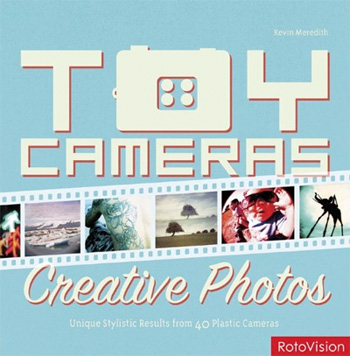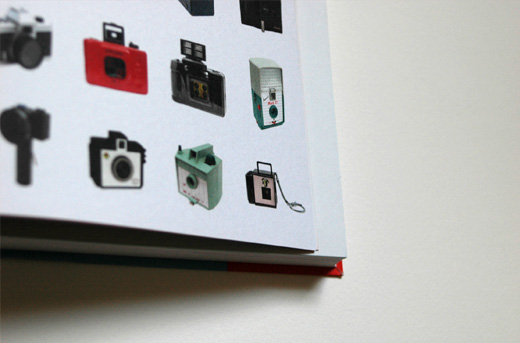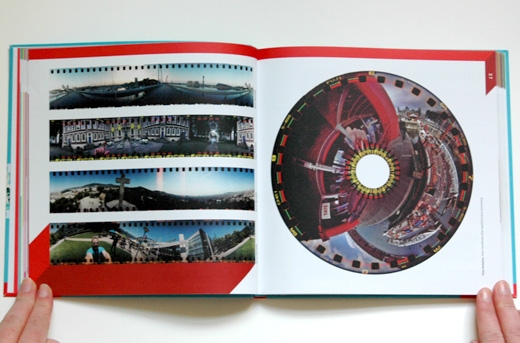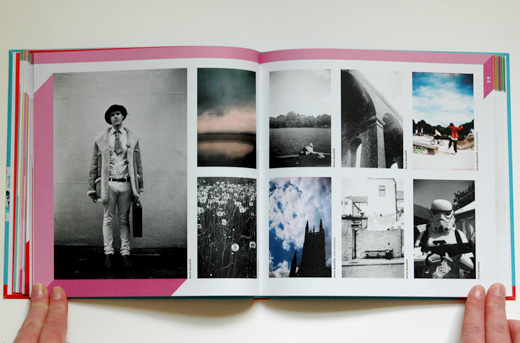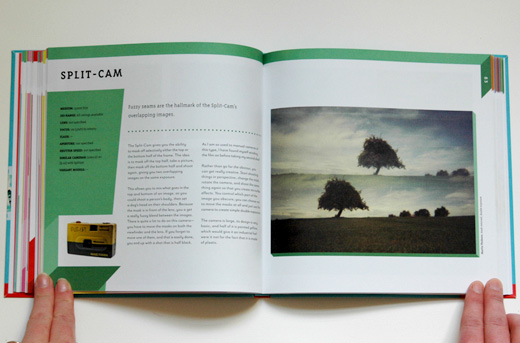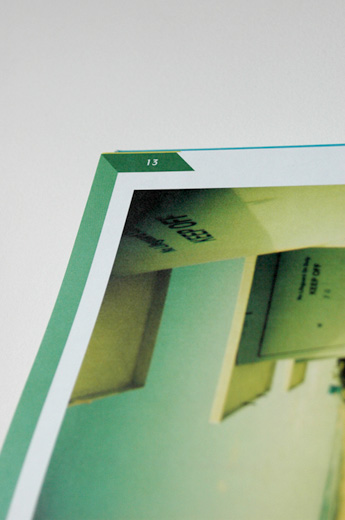Toy Cameras, Creative Photos: High-end Results from 40 Plastic Cameras
I would think that most designers with an eye on the lo-fi will be familiar with the aesthetic of toy cameras. As an arty type with an interest in lo-fi technology and photography I have a couple of toy cameras myself, so when the opportunity came about to review Kevin Meredith’s book on toy cameras, Toy Cameras, Creative Photos: High-end Results from 40 Plastic Cameras, I was keen to get my hands on it and see what other plastic fantastic cameras are out there.
So what is a toy camera? As Kevin Meredith states in his introduction, it might be a better to ask: “what is a serious camera?”
The answer to that question is simpler, a serious camera is one that has been designed to capture a scene with as much accuracy as possible. The resulting images, while technically perfect, can seem a bit lifeless to some people. Toy cameras are ideal for photographers who don’t want to capture a polished version of the world.
The book’s setup and approach is straightforward - 40 toy cameras and examples of photographs taken by those cameras. How the book is structured is also simple - each camera gets a page with an image of, and a few paragraphs about, the camera in question and then several spreads of photography will follow, the photographs illustrating the cameras foibles and quirks. With many images the film type and other details such as the processing technique are given.
The text is informative and succinct. With each camera a little background or description is given, Meredith giving his opinion on the cameras practicality, drawbacks and quirks; for each camera information is given on lens type, aperture, shutter speed, film type, ISO and similar and variant models. The photography throughout the book is excellent. As well as the photography of the author, Meredith has also roped in a load of contributors all who have supplied quality photography.
I was initially surprised at the inclusion of digital cameras, but by Meredith’s own definition a toy camera can be digital and including them supports the inherent inclusiveness of toy cameras. The random ‘happy accidents’ of light leak and vignetting also add to this inclusiveness - no matter what your proficiency in photography the same random results will happen. This is were the divide happens - to embrace such lo-fi photography you have to accept and embrace these random quirks - control freaks should stick to their high-end SLR’s.
The book ends on brief but informative sections on film formats, processing, and toy camera basics: Film speed, shutter speed and aperture.
I don’t have any real criticisms of this book, It is a simple proposition executed well. I would have preferred to have seen larger images of the camera’s themselves, and the overall design, the graphical elements, furniture and colour, is a little derivative. It looks, well, like a Lomography product. Lomography is the commercial trademark of Lomographische AG, an Austrian company whose name is taken from the former Russian state-run optics manufacturer[ ](https://en.wikipedia.org/wiki/LOMO)LOMO PLC, and their camera the LOMO LC-A, which Lomographische AG distribute around Europe. Lomographische AG have very cleverly promoted and nurtured a large worldwide community whose interests are cheap plastic cameras, soviet imports and processing techniques such as cross processing and redscale. The design throughout Toy Cameras, Creative Photos echo the Lomography branding used throughout their publications and marketing material. Of course there is nothing wrong with this, in fact from a marketing perspective it is probably the right approach as Lomography is such a recognisable entity and has such a large community. I guess I feel that there has been a missed opportunity for this book to have an identity of it’s own, but this is a minor gripe and overall the important bits - the photography and text - are given plenty of space to breath.
For a newcomer to lo-fi photography and toy cameras this book will be a great introduction. To someone like me who has already got the lo-fi camera bug it is still a great buy. There are cameras featured in this book that I never knew existed, the action sampler cameras really stoked my imagination, I can see myself trawling ebay for an Oktomat sometime soon. The Ikimono looks cute too.
This book also works well as a reference book or a source of inspiration - there really is some great photography featured and anyone with an interest in photography, be it lo-fi, digital or film will appreciate the qualities of the images.
Toy Cameras, Creative Photos: High-end Results from 40 Plastic Cameras is published by RotoVision and available in Amazon’s UK or The Designer’s Review of Books Amazon stores.
About the Reviewer
Owen Priestley is the Senior Art Director at digital agency Kerb and is a contributor to the arts, culture and politics blog www.20three.com. Follow Owen on Twitter – https://twitter.com/owen20three


